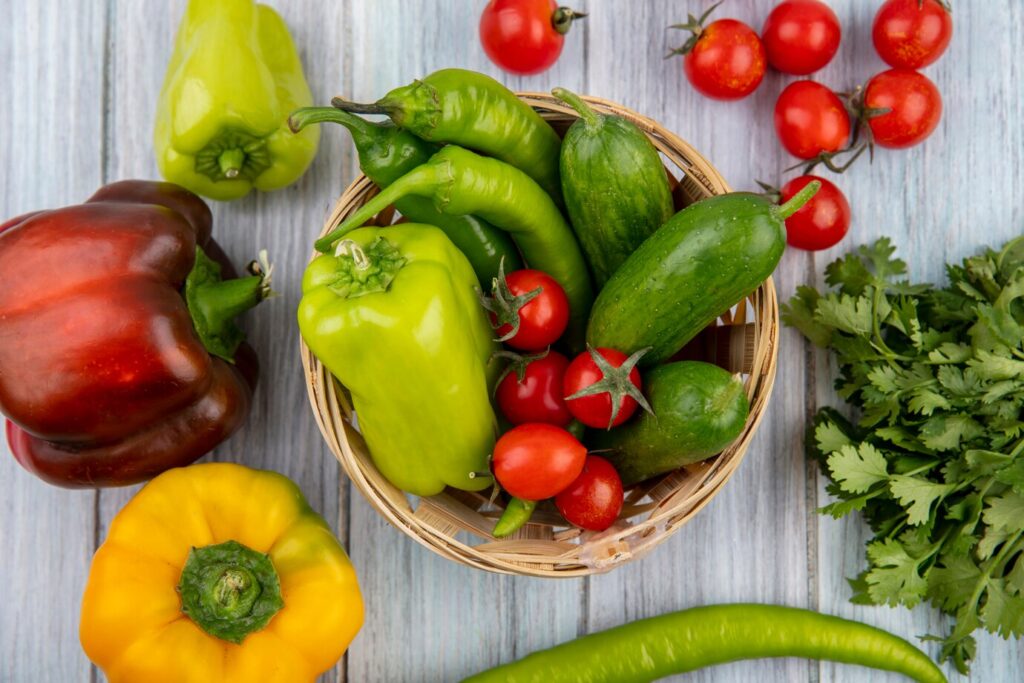
Benefits of Growing Edible Plants at Home
Growing edible plants at home offers a multitude of benefits that can enhance both individual well-being and the environment. One of the most significant advantages is the nutritional value derived from growing one’s own food. Home-grown plants are often fresher and retain more nutrients compared to those purchased from grocery stores, which can lose vitamins and minerals during transportation. By cultivating a variety of vegetables, herbs, and fruits, individuals can ensure that they have a steady supply of nutritious produce at their fingertips.
Another prominent benefit of home gardening is the potential for cost savings. Purchasing organic or specialty produce can lead to considerable expenses, whereas growing edible plants in one’s backyard or windowsill significantly reduces food costs over time. The initial investment in seeds and soil is generally minimal, and the ongoing supply of home-grown produce can alleviate grocery bills, making it an economically viable option for many households.
The environmental impact of growing edible plants cannot be overlooked. By cultivating food at home, individuals can reduce food miles, contributing to a decreased carbon footprint. Food miles refer to the distance that food travels from the farm to the consumer’s plate, and minimizing this distance can lead to lower greenhouse gas emissions. Additionally, home gardens promote biodiversity and can provide habitats for various beneficial microorganisms and insects, further enhancing the local ecosystem.
Furthermore, gardening has therapeutic benefits that promote mental well-being. Engaging in gardening activities has been shown to relieve stress, improve mood, and enhance overall life satisfaction. The act of nurturing plants can foster mindfulness and serve as a positive outlet for creativity, making it a fulfilling hobby that aligns with a sustainable lifestyle.
Choosing the Right Edible Plants for Your Home
Growing edible plants at home is an increasingly popular practice, as it allows individuals to enjoy the benefits of fresh produce while nurturing their green thumbs. When selecting the right edible plants for your home, there are several factors to consider to ensure they thrive in your environment and match your culinary preferences.
First, consider the types of herbs, vegetables, and fruits that suit your taste and cooking habits. Herbs such as basil and mint are well-known for their versatility in various cuisines and are relatively easy to grow indoors or in small outdoor spaces. Both of these herbs prefer bright, indirect sunlight and can be harvested continuously, providing fresh flavor year-round.
Next, evaluate the vegetables that can thrive in limited space. Compact varieties of tomatoes and peppers are excellent choices for home gardening. Tomatoes, especially determinate types, require around six to eight hours of sunlight daily and can easily be grown in containers. Similarly, dwarf pepper plants not only produce vibrant fruits but also contribute to the aesthetic appeal of your home garden.
In addition to herbs and vegetables, consider fruit-bearing plants that can adapt to smaller environments. Strawberries are a popular option, as they can be grown in hanging baskets, pots, or vertical gardens. Dwarf citrus trees, such as lemon or lime trees, can also flourish indoors and produce fragrant blossoms and tasty fruit with adequate light and care.
Finally, take into account your local climate and specific growing conditions. Certain plants may have varying sunlight and water needs depending on the temperature and humidity levels. By matching your edible plant choices with your home’s environmental conditions and your personal preferences, you can create a thriving edible garden that enhances your culinary endeavors and contributes to a more sustainable lifestyle.
Growing Techniques and Care for Edible Plants
Growing edible plants at home requires a systematic approach that combines knowledge of essential techniques and dedicated maintenance. One of the first steps in this process is seed selection. Choosing high-quality seeds that are suitable for your climate and soil type is crucial, as they directly impact plant health and yield. Heirloom varieties often yield better results in terms of flavor and nutrient content, while hybrid seeds may offer enhanced disease resistance and productivity.
The next fundamental aspect is soil preparation. Edible plants flourish in well-draining soil rich in organic matter. Before planting, you should amend the soil with compost or well-rotted manure to improve its structure and nutrient availability. Testing the pH level of your soil can also inform necessary adjustments, ensuring that it falls within the optimal range for most edible plants, usually between 6.0 and 7.0.
Watering schedules significantly affect plant growth. Regular, deep watering is preferable, especially during dry spells, as it encourages deeper root development. It is advisable to water early in the morning to minimize evaporation. Apart from watering, effective pest management is essential to protect your edible garden. Natural deterrents, such as neem oil or beneficial insects like ladybugs, can be utilized to manage pest populations without resorting to chemical pesticides.
Different types of edible plants require specific care instructions. Leafy greens, for instance, benefit from regular fertilization with nitrogen-rich fertilizers to promote healthy foliage, while fruiting plants like tomatoes require balanced fertilizers during their growth stages. Pruning is also beneficial, especially for plants like herbs and tomatoes, as it encourages bushier growth and increases yield. Lastly, timely harvesting ensures that you enjoy the peak flavors of your produce while encouraging continued growth.
Where to Order Edible Plants Online: A Resource Guide
In the quest to grow common household edible plants, knowing where to source your seeds, seedlings, and gardening supplies is crucial. A variety of reputable online platforms cater to home gardeners seeking quality products to cultivate their edible garden with success. Here are some reliable resources that can set you on your gardening journey.
One of the most well-respected online nurseries is <>, which has a longstanding reputation for providing high-quality seeds and plants. Their expansive variety includes everything from herbs to vegetables, making it a one-stop shop for all your growing needs. Additionally, they provide detailed planting guides, which can be quite helpful for novice gardeners.
Another excellent option is <> , known for its innovative and sustainable gardening practices. They offer a diverse selection of edible plants, alongside essential growing supplies. For those interested in community support, consider exploring <> , which connects consumers to local farmers and community-supported agriculture (CSA) programs. This not only supports local agriculture but also assures freshness and seasonal variety.
When ordering online, pay attention to the shipping options and seasonal availability of the plants you wish to purchase. Spring and early summer are typically the best times to order as most plants are available to be shipped. To enhance your online purchasing experience, read customer reviews and compare prices among various retailers. This approach not only ensures quality but can also be more economical. Always check for discounts and promotional offers, which are often available during peak gardening seasons.
With the right resources at your fingertips, embarking on your gardening adventure can be a seamless and enjoyable experience. The above recommendations should equip you with reliable options for procuring the edible plants necessary for a flourishing home garden.
